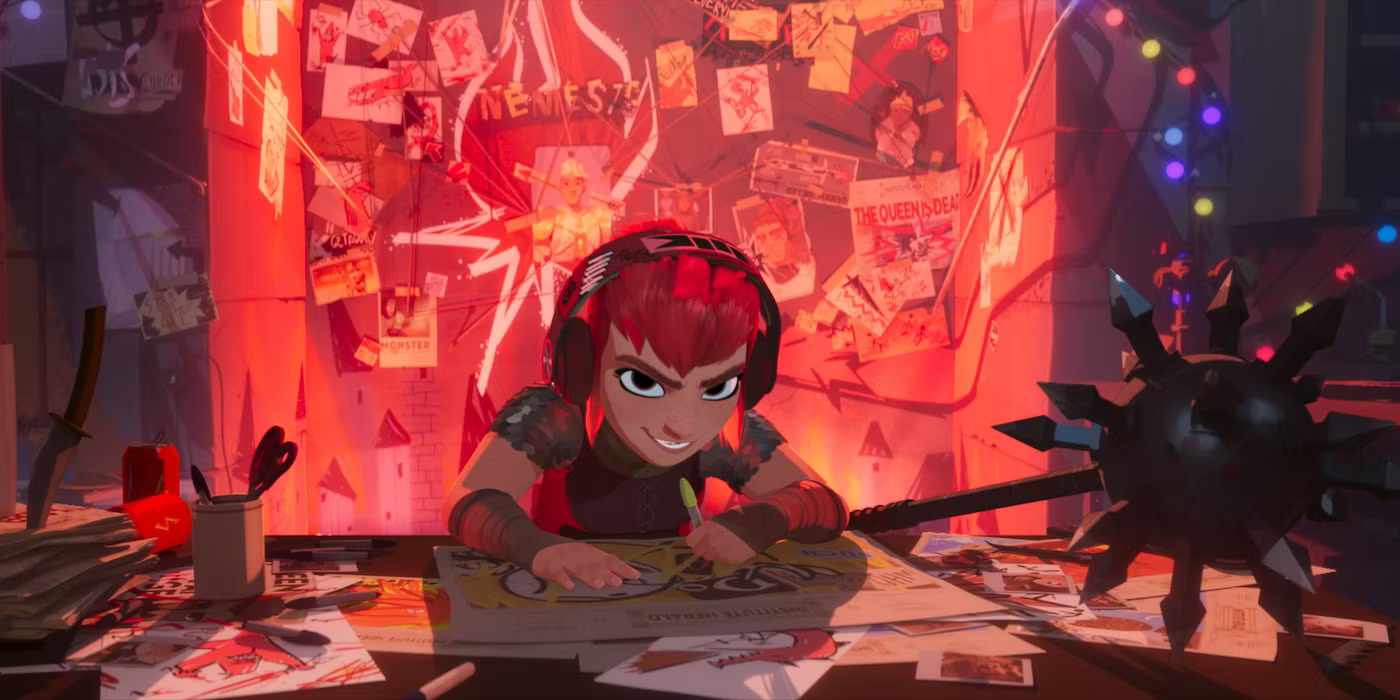After discovering that Nimona was the creature Gloreth had battled 1,000 years ago, Ballister confronts her about the truth. Despite Ambrosius’ orders to kill her, Ballister refuses, showing his loyalty and moral conviction. The Institution’s knights pursue Ballister in an attempt to arrest Nimona, but the situation escalates when Ballister angrily calls Nimona a monster for hiding her past. This moment of betrayal enrages Nimona, who reveals her deep history as Gloreth’s friend before being abandoned. Her anger transforms her into a shadow creature, leading to an attack on the kingdom that Ballister eventually stops.
Nimona’s Selfless Sacrifice Highlights Heroism, Survival, and Her Extraordinary Shapeshifting Abilities
Faced with the potential destruction of half the city by The Director, Nimona chooses to sacrifice herself to save the kingdom. This pivotal act elevates her from being perceived as a monster to being recognized as a hero. Her willingness to protect the people who misunderstood her demonstrates a profound moral growth, as she prioritizes the greater good over personal vengeance. The kingdom ultimately honors her heroism, signaling a reconciliation of her complex identity with societal recognition.
Although Nimona seemingly dies after her shadow form is destroyed by The Director’s weapon, she returns at the end, revealed only through her voice. The film leaves her physical state ambiguous, but her shapeshifting abilities suggest that one weapon could not truly destroy her. Having survived Gloreth’s attack 1,000 years prior, Nimona’s resilience appears near-supernatural. It is implied that she needed time to reform after disintegration, and her ability to take on various forms ensures her survival, making her more than a typical human in terms of durability.

Nimona’s Shapeshifting Powers Enable Survival and Emotional Growth Through Heroic Sacrifice
Nimona’s longevity and survival are linked to her shapeshifting abilities, which allow her to endure events fatal to humans. In her final form, she takes on a bird-like shape, reminiscent of a phoenix, preserving the core part of herself that can continue living. Ballister’s plea for her to return also highlights the emotional bond between the characters, reinforcing that her survival is both physical and relational. This supports the film’s hopeful tone, avoiding a tragic ending and emphasizing themes of resilience and renewal.
Nimona’s decision to sacrifice herself reflects a deep emotional journey. Initially, her transformation into a shadow creature symbolizes her frustration at being labeled a monster by Ballister, conditioned by societal expectations and the Institution’s propaganda. Yet, she chooses heroism after Ballister demonstrates genuine understanding and acceptance. By acknowledging her pain and identity, Ballister allows Nimona to act selflessly, shifting the perception of her from villain to hero and solidifying her legacy in the kingdom.
The animated adaptation of Nimona introduces several changes from ND Stevenson’s 2015 graphic novel. Ballister’s backstory differs: in the novel, he loses his arm during a jousting match, while in the film, he is framed for the queen’s death. The narrative also shifts Nimona’s conflict with the kingdom; in the novel, she is captured and experimented on, leading to a fight with Ballister that ends in separation. In contrast, the film emphasizes reconciliation, sacrifice, and survival. These changes highlight themes of acceptance, societal critique, and challenging systemic prejudices, while preserving the emotional core of Nimona’s story.



